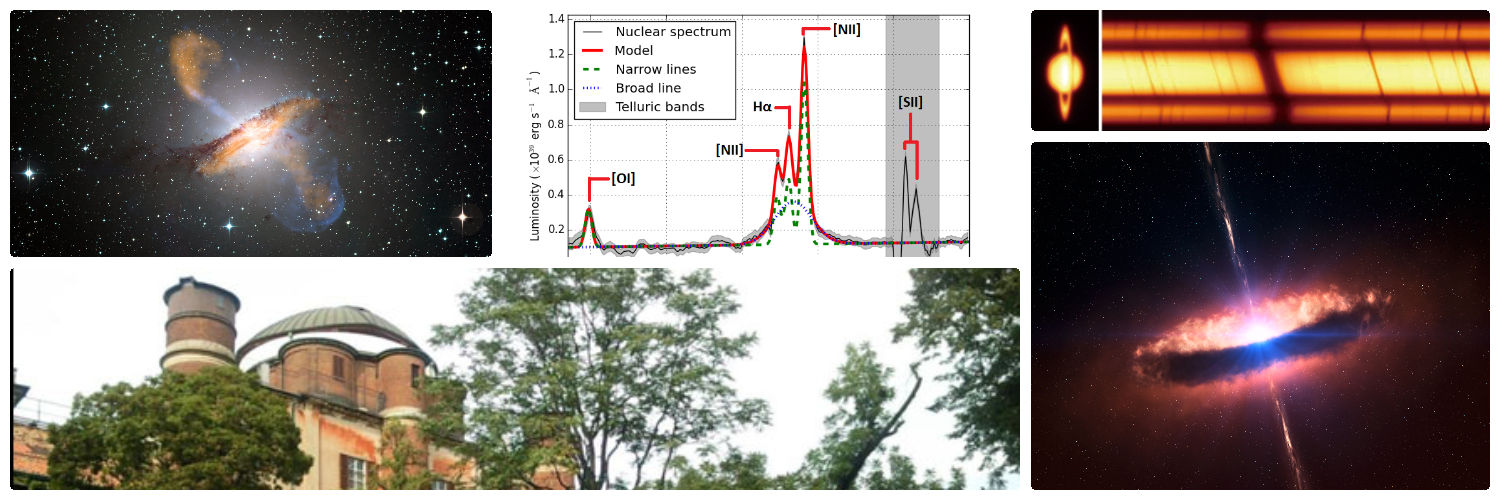Astrophysics research contributions
In this page you can read my contributions in the astrophysics field. In particular work related with Active Galactic Nuclei, applications of the K-means unsupervised classification algorithm applied to spectral data, and a classification of a supernova.
My activity in astrophysics was mainly conducted in the Canary Islands while I was studying, and later on in Santander, at the Institute of Physics of Cantabria, where I worked on my PhD Thesis. Also, I’ve worked as a visiting research fellow at the Observatory of Brera in Milan and in the National Observatory of Athens during my PhD studies.
You can find my astrophysics research papers and other contributions in ADS.

Active Galactic Nuclei
My main research line was related to Active Galactic Nuclei. During the 18th and 19th centuries, it was not clear whether the ‘nebulae’ seen in the sky were part of our galaxy, or they were ‘island-universes’ composed of stars (Kant 1755). Since the discovery in 1924 of a Cepheid variable star in M31 (Hubble 1929), whose emission properties allow us to determine its distance, it became clear that some of them were extragalactic objects, or more precisely, they were galaxies like the Milky Way. Using spectroscopic analyses, it soon became clear as well that some of the galaxies showed emission lines of highly ionized elements in their nuclei (Seyfert 1943) that cannot be explained just by the emission mechanisms of the stars, and so this emission is originated by a completely different phenomenon. In some of these galaxies, this non stellar radiation completely outshines the galaxy starlight. These objects are called ‘Active Galactic Nuclei’ (AGN).
Nowadays, it is widely accepted that the origin of this emission is due to supermassive black holes (SMBH) of 10^6−10^9 solar masses in the centre of the active galaxies. The material that falls into the immense gravitational potential of the SMBH, releases energy in a process called accretion which is the origin of the electromagnetic emission.
I’ve worked analyzing the relation (or lack of it) between the optical extinction, X-ray absorption and classification of Active Galactic Nuclei.
Below I list some of my contributions
- A multifrequency view of Active Galactic Nuclei, PhD Thesis - 2019 (Summary \ PhD Thesis PDF \ Link to the abstact in the UCrea repository)
- AGNs with discordant optical and X-ray classification are not a physical family: diverse origin in two AGNs, Ordovás-Pascual, I.; Mateos, S.; Carrera, F. J.; Wiersema, K.; Barcons, X. ; Braito, V.; Caccianiga, A.; Del Moro, A. ; Della Ceca, R.; Severgnini, P. - 2017 (ADS Abstract \ Full text)
- Searching for luminous absorbed sources in the WISE AGN catalogue, Mountrichas, G.; Georgantopoulos, I.; Secrest, N. J.; Ordovás-Pascual, I.; Corral, A.; Akylas, A.; Mateos, S.; Carrera, F. J.; Batziou, E. - 2017 (ADS Abstract \ Full text)
K-means clustering in astrophysics
In my Master Thesis I’ve had my first experience with machine learning under the supervision of Jorge Sánchaz Almeida, from the Institute of Astrophysics of Canarias (La Laguna, Spain). There, I’ve worked using the k-means unsupervised classification algorithm applied to galaxy spectra using a modification of the original algorithm, so the centroids of the clusters are updated on-the-fly (single pass K-means). Later on, I’ve collaborated in the first steps of a study applying k-means clustering to the stars of the APOGEE survey.
Below I list different contributions:
- Machine learning in APOGEE. Unsupervised spectral classification with K-means, Garcia-Dias, R.; Allende Prieto, C. ; Sánchez Almeida, J.; Ordovás-Pascual, I. (ADS Abstract \ Full text)
- A fast version of the k-means classification algorithm for astronomical applications, Ordovás-Pascual, I. ; Sánchez Almeida, J. - 2014 (ADS Abstract \ Full text)
Supernova classification
As part of the NEON Observing School in Asiago (Italy) in 2015, I was part of an observing campaign where we classified a supernova six days after its peak in luminosity. This was published in the Astronomer’s Telegram.
